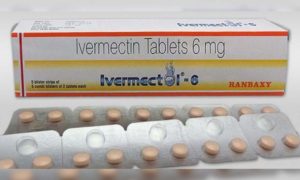Evidence Suggests Hormonal Contraceptive-Autism Link

With the autism spectrum epidemic raging, many are hypothesizing the cause, which is likely multifactorial. The mystery of autism has befuddled the scientific community as of yet, but new evidence in the scientific literature is pointing to a potentially shocking culprit: hormonal contraceptives. There may be a birth control-autism link.
The first piece of the puzzle is the peculiarity of the heavy male to female diagnoses (4.3:1) of autism. Simon Baron-Cohen, Director of the University of Cambridge Autism Research Centre, has suggested that the sex differences of the brain may be related. He subscribes to the “extreme male brain” theory, which hypothesizes that an increased sex hormone level during development may structure the brain to stress systemizing as opposed to empathizing. The reason males have a higher prevalence of autism than females is because they already receive a higher level of sex steroid during development. An unnatural increase of these hormones during development is enough to push more males over the hypothetical threshold into autism spectrum disorders.
You might be thinking this sounds like a stretch or that autism is being oversimplified, but there is evidence of this phenomenon. The hormonal link may be an integral element to autism prevalence that has been largely ignored. In 2015, Baron-Cohen and colleagues found elevated levels of the four Δ-4 sex steroids (progesterone, 17α-hydroxy-progesterone, androstenedione and testosterone) in the amniotic fluid of boys later diagnosed with autism. In other words, children who were exposed to elevated levels of sex hormones in utero were more likely to later be diagnosed with autism.
But what could cause an increase in testosterone during development? One novel and uncomfortable possibility is the pre-gravid use of hormonal contraceptives.
Hormonal contraceptives use a diverse combination of synthetic estrogen- and progesterone-like hormones and these artificial compounds sometimes have unintended masculinizing effects on the body. In their literature review “50 years of hormonal contraception—time to find out, what it does to our brain,” Belinda Pletzer and Herbert Kerschbaum explain:
…hormonal contraceptives … lead to a reduction of endogenous estradiol and progesterone levels (e.g., Sahlberg et al., 1987). In the presence of high levels of progesterone, testosterone-actions are impaired, because progesterone has a high affinity for the enzyme 5α-reductase, which is responsible for the conversion of testosterone into the physiologically more active dihydrotestosterone (Wright et al., 1983). If progesterone levels are reduced, more testosterone can be converted to dihydrotestosterone. Thus, any hormonal contraceptives, irrespective of the progestin component, may facilitate testosterone actions on the brain, thereby masculinizing brain structure, function and behavior. Alternatively, it has been argued that some masculinizing effects are promoted by estrogen receptors after testosterone has been locally converted to estrogen via the enzyme aromatase (Roselli, 2007). Consequently, estrogenic actions of ethinylestradiol may contribute to possible masculinizing effects of hormonal contraceptives on the brain.
 In other words, some oral contraceptives masculinize the brain, which has long term effects even after discontinuation of the drug. While it appears OC users have lower testosterone during use, one study showed that previous hormonal contraceptive use led to larger babies, and pertinent to this conversation, higher levels of another sex hormone during pregnancy: “Women with prior oral contraceptive use had higher levels of serum progesterone (P= 0.002) and oestriol (P= 0.12) at the 27th gestational week measurement.”
In other words, some oral contraceptives masculinize the brain, which has long term effects even after discontinuation of the drug. While it appears OC users have lower testosterone during use, one study showed that previous hormonal contraceptive use led to larger babies, and pertinent to this conversation, higher levels of another sex hormone during pregnancy: “Women with prior oral contraceptive use had higher levels of serum progesterone (P= 0.002) and oestriol (P= 0.12) at the 27th gestational week measurement.”
It’s clear, then, that hormonal contraceptives affect the physiology to a varying degree, resulting in a higher progesterone level during pregnancy, which has been linked with a higher incidence of autism.
But if the pill caused the huge spike in autism diagnosis, we should expect to see a similar exponential rise in hormonal contraceptives use over the same time. Yet the percentage of women taking the pill is roughly the same as it was in the mid-60s.
The difference is not in how many people are taking the pill, but what pill they are taking. After an outcry of the dangers of the initial high-estrogen pill in the ‘70s, there were Senate hearings on safety of the pill and sales dropped dramatically. By 1988, the high-dose pill was taken off the market and replaced by new lower-estrogen pills. New oral contraceptive pills have lower doses of hormones, but more potent and highly targeted ones.
In addition to this shift in oral contraceptive composition, new methods of oral contraceptives have become popular recently including the patch and implant contraceptive, which provide a constant supply of synthetic progestin (without the cyclical break of older oral methods). We’ve seen a ten-fold increase in these methods since the ‘90s, a rise that eerily matches the rise in autism. Additionally, women are taking oral contraceptives earlier and earlier, oftentimes to combat conditions unrelated to ovulation such as acne.
This is not to say that hormonal contraceptives are the only cause for autism. Many people who have never used hormonal contraceptives have children with autism. This is simply to show there is evidence that the drug group in general could be a contributing factor for the disease.
More studies are required to determine which synthetic hormones have the masculinizing effect on the brain and tend to elevate progesterone levels after use, but until that happens, we should expect to see increased incidence of autism associated with long-term and recent hormonal contraceptive use.






